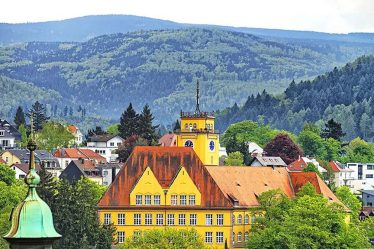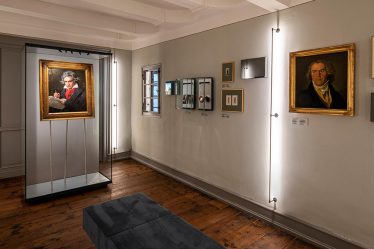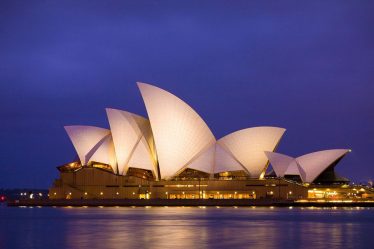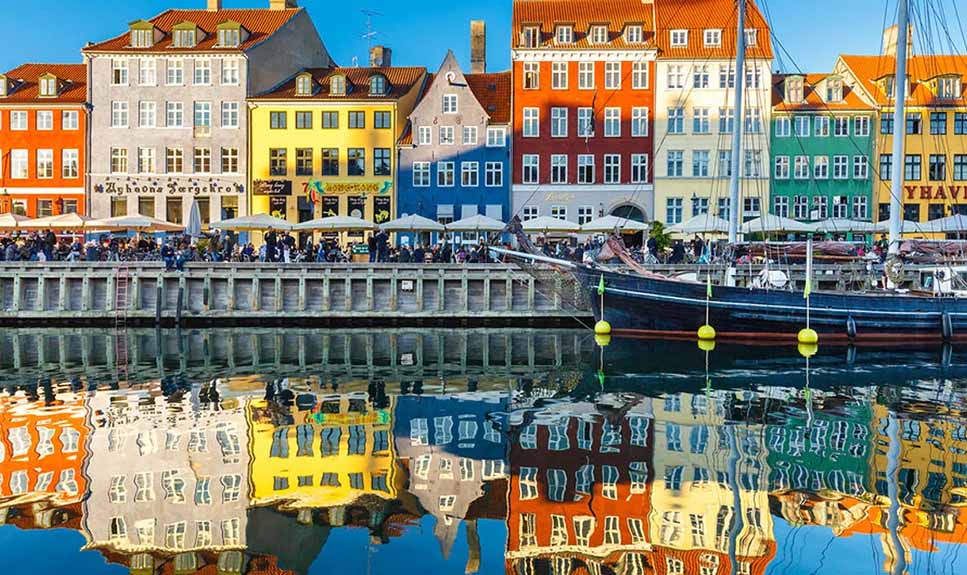
When one thinks of Denmark, the phrase “fairy tale country” often comes to mind. And at the heart of that magical spirit lies Hans Christian Andersen. As the beloved author of The Little Mermaid, The Little Match Girl, The Ugly Duckling, and many other timeless stories, Andersen not only crafted fantastical worlds with his pen but also left a deep imprint on the streets and corners of Copenhagen.
If you’ve ever dreamed of stepping into a storybook world, a walk through Copenhagen’s Old Town promises an enchanting journey where every step brings you closer to a fairy tale.
Let me take you through the neighborhoods Andersen once lived in, tracing his life, imagination, and daily strolls. Together, we’ll explore historic streets, whimsical sculptures, cultural landmarks, and quiet book-filled corners—experiencing the lasting romance that blends reality and fantasy in Copenhagen.
I. Starting from Nyhavn: Entering the World of Fairy Tales
Nyhavn is undoubtedly one of Copenhagen’s most iconic landmarks. With its vibrant 17th-century buildings lined up along the canal, each colorful facade sparkles under the sun, creating a scene straight from a picture book. Traditional sailing boats gently rock on the water, and the lively sounds of musicians and laughter float through the air, enhancing the nostalgic charm.
It was in this lively harbor that Andersen spent some of the most important years of his life.
Andersen’s Homes
At Nos. 20, 67, and 18 Nyhavn, Andersen lived at different times. The most famous is No. 67—a quaint yellow building marked with a bronze plaque, noting that Andersen wrote world-renowned tales such as The Emperor’s New Clothes and The Little Mermaid here.
Strolling down this historic street, you can almost imagine Andersen gazing out the window, weaving stories from the view of ships coming and going. The scent of the sea mingles with fresh pastries from nearby bakeries, creating a sensory backdrop for inspiration. Why not sit at one of the outdoor cafés, order a Danish-style espresso, and flip through a fairy tale book? As you watch the world go by, it’s a perfect way to share a quiet moment with the master storyteller himself.
II. Exploring Kongens Nytorv and the Royal Danish Theatre: Reality Behind the Fantasy
Just a short walk from Nyhavn is Kongens Nytorv, or the King’s New Square—a central city landmark since the 17th century. The square’s grandeur is accentuated by its symmetrical layout, statues, and seasonal flower displays. Surrounded by classical buildings, cobbled avenues, luxury shops, and historic hotels, it has long been a social and cultural hub for Copenhageners and visitors alike.
The Royal Danish Theatre
Andersen had a lifelong love for the performing arts. In his youth, he tried to make a name for himself as an actor at this very theatre, before turning to writing. His passion for drama and ballet deeply influenced his tales—many of which carry the emotional rhythm of a stage performance.
Standing before the theatre, one might wonder—did the emperor enchanted by music in The Nightingale take form here, inspired by this grand structure? The building’s neoclassical architecture, adorned with columns and gilded details, is strikingly majestic.
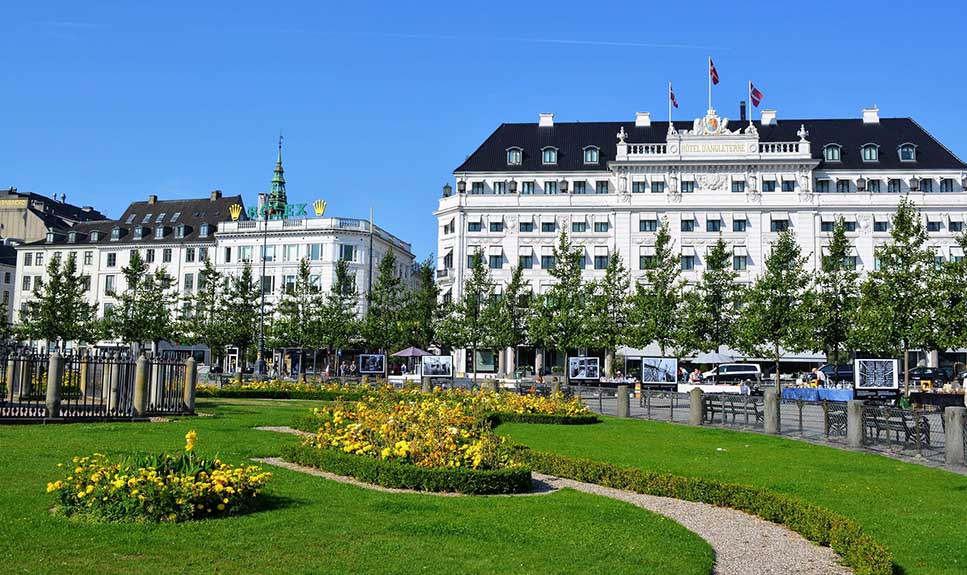
If time allows, step inside for a guided tour through its lavish halls and velvet-draped auditorium, or attend a ballet performance in the evening. From the hushed anticipation before the curtain rises to the graceful movements of dancers on stage, the blend of classical elegance and imaginative flair offers profound insight into the emotional depth and theatrical soul of Andersen’s stories.
III. Strolling Købmagergade and the Round Tower: Where Books Meet the Stars
A ten-minute walk from Kongens Nytorv brings you to Købmagergade, a vibrant pedestrian street filled with bookstores, cafés, and history, leading up to one of Copenhagen’s most distinctive landmarks—the Round Tower (Rundetårn). This area has long been a hub for intellectuals, artists, and dreamers, and it’s easy to imagine Andersen himself pausing here, soaking in both scholarly atmosphere and street charm.
The Round Tower (Rundetårn)
Constructed in the 17th century as part of King Christian IV’s architectural vision, the Round Tower was Denmark’s first public observatory. Its gentle spiral ramp, winding 268 meters without a single step, was designed to allow horse-drawn carts to reach the top. As you ascend, you’ll pass through arched windows that reveal glimpses of the old city, building anticipation for the sweeping panorama that awaits at the summit.
It’s said that Andersen was fascinated by the stars and often pondered the universe—elements that echo in tales like The Tinderbox. Today, the tower is more than a viewpoint. Its central hall frequently hosts art exhibitions, chamber concerts, and literary talks, immersing visitors in a world where history and creativity meet. As you reach the rooftop, the crisp Nordic air and the vast cityscape below may just stir your imagination too—perhaps enough to pen your own fairy tale.
IV. Discovering the Old Town’s Hidden Corners: Fairy Tales Around Every Bend
Copenhagen’s Indre By, or Old Town, invites travelers to slow down and observe. Its narrow streets and whimsical corners seem untouched by time. Here, the modern rhythm of the city softens into something more intimate—a visual and emotional echo of Andersen’s tales. Whether you’re chasing morning light or strolling at twilight, every turn holds a whisper of nostalgia.
Magstræde and Snaregade
Among the city’s oldest and most photogenic streets, Magstræde and Snaregade offer a true step back in time. These cobbled lanes are framed by 17th and 18th-century townhouses in dusky pinks, ochres, and deep greens, each with stories of their own. You’ll find ivy-covered façades, uneven shutters, and flower boxes overflowing with seasonal blooms. Some windows still hold flickering candles—a Danish tradition of hygge that adds to the warmth of the neighborhood.
These streets were Andersen’s favorites for good reason. The tranquility they offer is perfect for creative wandering. As autumn leaves swirl gently to the ground, it’s not hard to picture a scene from Thumbelina unfolding before your eyes—a tiny heroine riding a leaf like a boat through golden puddles. Here, fairy tales are not just remembered—they’re quietly, beautifully lived.
V. Reconnecting with Words at the Hans Christian Andersen Experience
For travelers deeply interested in Andersen’s work, the Hans Christian Andersen Experience in Copenhagen is a must-visit. While the museum today leans toward immersive and interactive displays, it remains a crucial link between reality and fantasy, especially for those who grew up with his stories etched into their childhoods.
The Andersen Experience
This attraction goes beyond a typical museum—it’s an emotional journey through the life of a literary legend. Using cutting-edge technology such as light shows, lifelike projections, audio narratives, and 3D models, the exhibition brings to life Andersen’s path from a poor cobbler’s son to an internationally celebrated author. Especially compelling are the immersive rooms—you can step into the shimmering underwater palace from The Little Mermaid, wander through the cold, candle-lit streets of The Little Match Girl, or witness the spectacle of The Emperor’s New Clothes in a whimsical palace courtyard.
Each room is designed to stir the senses: scents of the sea, ambient winter breezes, even whispered voices draw visitors deeper into the tales. Whether you’re a wide-eyed child or a nostalgic adult, the experience reconnects you with the emotional core of Andersen’s stories—the longing, wonder, and quiet strength that make them timeless.
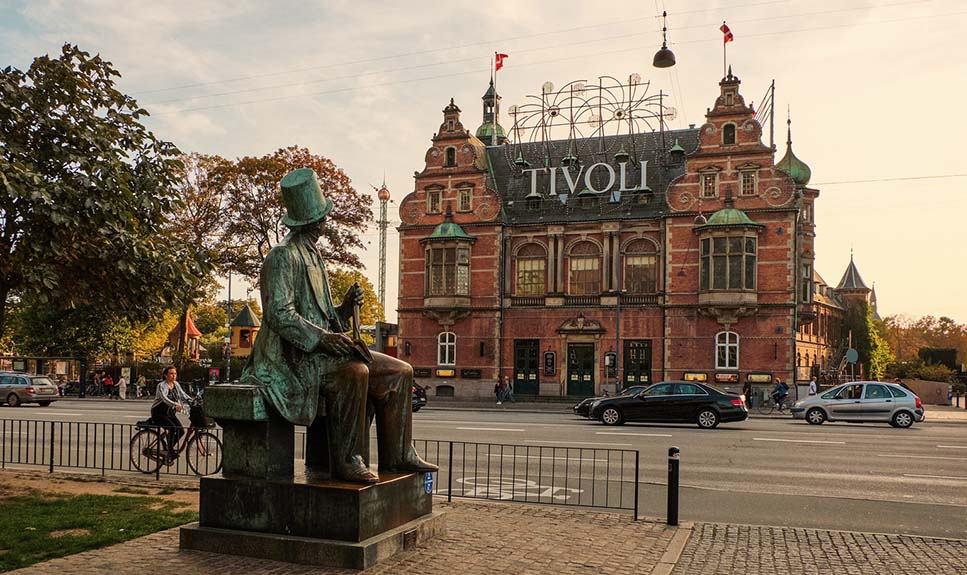
VI. At the End of the Fairy Tale, Discover the Real Copenhagen
If Andersen’s stories are often tinged with bittersweet beauty, then Copenhagen itself is like a real-life version of that duality—charming yet understated, romantic yet grounded. It’s a city that breathes warmth through its people and its everyday rhythm, where fairy tale ideals quietly coexist with modern life.
After a full day wandering through the old cobbled streets, ancient towers, and magical corners, take a moment to rest at City Hall Square (Rådhuspladsen). This expansive plaza is not just a civic space, but a living stage where locals meet, musicians perform, cyclists pass, and time seems to flow gently. In the midst of the movement stands a bronze statue of Hans Christian Andersen himself, seated thoughtfully with a book in his lap. His gaze is slightly tilted, as if he’s watching the people of the city—perhaps searching for a spark, a moment, or a character to shape his next tale.
The statue isn’t merely commemorative; it feels alive, symbolic of how deeply Andersen’s presence still lingers in Copenhagen. You might even feel compelled to sit beside him, take a photo, or just pause and listen—not with your ears, but with your heart. For in that quiet moment, you may realize that the true fairy tale is not just something we read, but something we live, one story at a time.
VII. At the Journey’s End, Leave Behind a Fairy Tale of Your Own
We may no longer be children who fully believe in fairy tales, but Copenhagen’s Old Town gently reminds us: fairy tales haven’t vanished—they’ve simply taken on new forms.
Walking the same cobbled streets that Andersen once did, we come to understand that the essence of a fairy tale isn’t about miracles—it’s about finding beauty in life’s small, real moments.
